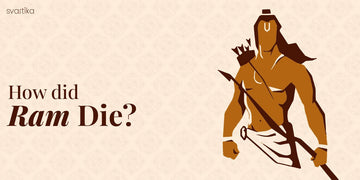The epic novel of Ramayana holds an abundance of significance in the hearts and minds of Hindus.
Considered to be one of the epic mythology of the Hindu culture, Ramayana holds with it legends ringed with lessons that are sure to fascinate the generations to come.
The Ramayana is an ancient Indian epic written in Sanskrit. Along with the Mahabharata, it is considered one of the two Itihasas, or sacred texts, of Hinduism.
The Maharishi Valmiki epic tells the story of Rama, the legendary prince of Ayodhya city in the kingdom of Kosala.
The novel by Maharishi Valmiki follows the story of Lord Ram, and one of the questions that linger long after the completion of this epic tale is the fate of Lord Rama and his demise.
And in this article, we'll be looking into how Lord Ram passes away in lieu of Ramayana.
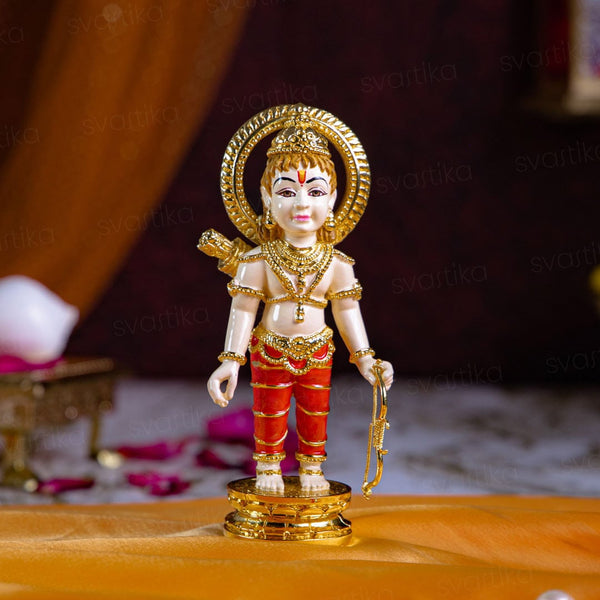
Childhood Form of Lord Ram - Gold Plated (6 Inch)
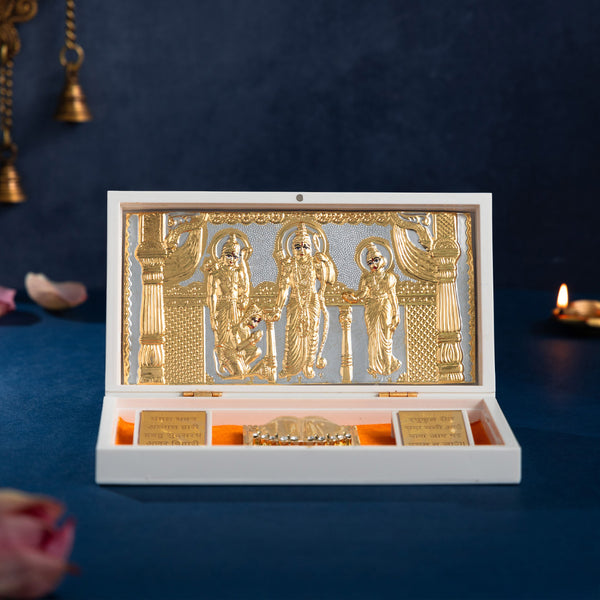
Svastika Ram Darbar Pocket Temple - Gold Plated
Rama's Death is not Mentioned in the Original Ramayana
Ramayana recounts the life of Lord Rama and serves as a guide to the values and virtues he advocated for through his actions.
After returning to Ayodhya from his years in exile, it is popularly considered that he was the emperor of the Indian subcontinent for hundreds of years.
The original Ramayana epic concludes with Lord Rama's victory over Ravana and makes no further reference to the events that transpired after Rama's return to Ayodhya.
Although the Ramayana itself provides no hints as to how he met his end, other ancient writings do. No information about Rama's life after he returned to Ayodhya can be found in Valmiki's Ramayana.
Kala Deva Visits Lord Rama in Court
A legend from the Padma Purana states that one day, while Lord Rama was at his court, an old saint came in and asked to speak with him privately about something.
After agreeing, Lord Rama took the sage aside in a private chamber to discuss the concerned matter in question.
Lakshmana, Lord Ram's younger brother, was waiting for them outside the door. When Lord Rama was alone with the saint, he told his brother not to let anyone else in the room.
He added that the death penalty would be given to anyone who entered the room or tried to interrupt their conversation.
Lakshmana is dutiful in Guarding the Room
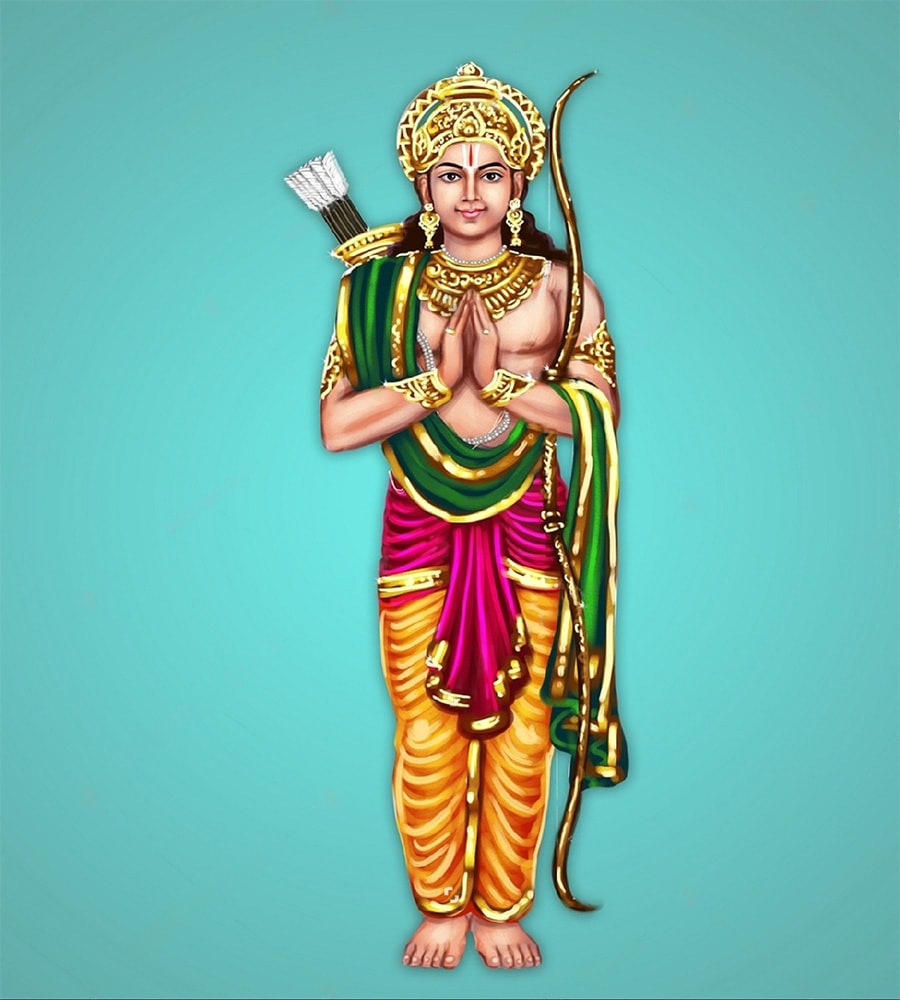
Lord Lakshmana was a devoted sibling, loyal and faithful to his brother.
Therefore, standing true to his loyalties, Lord Lakshmana was a man of honor and gave the sadhu and his brother his word, leaving to faithfully guard the room that his brother and the saint had left.
Kala Deva (God of Time) Reveals his True Form

Lord Rama questioned the Sadhu about the reason for his visit to find out what it was all about.
In response to this, the sadhu simply smiled in a way that suggested there was some hidden meaning behind it; Lord Rama was quick to understand what this meant.
At this point, the sadhu showed himself to be present in his original form. He was actually Kala Deva himself, taking on the appearance of a sadhu.
He was dispatched from Vaikuntha to remind Lord Rama that his time on earth was coming to an end and that it was time for him to return to his abode because the objective of his incarnation had been accomplished by this point.
Carrying this message forth from Vaikuntha, Kala Deva conveys the same to Lord Rama!
Sage Durvasa Arrives

It was at this precise moment that sage Durvasa suddenly materialized, demanding that Lord Lakshmana allow him a darshan of Lord Rama at that very minute.
Even though Laksmana was taken aback by his unexpected visit, he stayed true to his word to the sage and his brother and politely declined Durvasa's command.
Sage Durvasa made a threat against Lord Rama, threatening to curse him because he found it impolite of Lord Rama to let him not enter his premises.
It was common knowledge that Durvasa suffered from a foul temper. It was well known that he would become irritated at the slightest provocation and punish others with his curses.
The Curse of Sage Durvasa to Rama
Despite his multiple requests to Sage Durvasa to wait until Lord Ram finishes his meeting with the saint, the sage was quick to fly into a temper.
Upon threatening Lord Lakshmana by telling him that he would be cursing Lord Rama, Lakshmana was put into a highly complex situation.
Known for his undying loyalty to his brother and unwavering faith, Lord Lakshmana was stuck not knowing which decision to make.
To shield his brother from the wrath of Sage Durvasa, Lord Lakshmana made his decision and walked into the room himself.
He was willing to give his life to stop the curse, but he was more inclined to free his brother. He finally complied with Rishi's requests and entered the space.
The Lord Rama's Dilemma
When Lakshmana bursts unexpectedly into the room, Rama is taken aback, but he quickly realizes that his presence has been called for in order to rescue him from Durvasa.
Since time was running out and the promise had to be kept, Kala deva proposed that Lakshmana be exiled from the kingdom, a fate worse than death.
Therefore, Lakshmana was ordered to leave the kingdom by Lord Rama.
Jal Samadhi of Lakshmana
Lakshmana could not fathom an existence where he could live without Lord Ram. He concluded that his incarnation's mission had been accomplished, and he entered the Jal Samadhi.
Kala Deva informed him that Sita had departed Vaikunta earlier than Lakshmana in order to await the arrival of Lord Rama. The next in line was Lakshmana, who had to get himself ready to serve Lord Rama in Vaikuntha.
Leaving the mortal coil through complete immersion in water is known as Jal Samadhi. Soon after Lakshman's departure, Lord Rama was left on his own, and he saw no point in remaining on Earth now that he had established Rama Rajya and provided justice for all of his subjects.
He had completed his role as a sibling, parent, and spouse, as well as an avatar of god sent to earth to vanquish the demon king of Lanka, Ravana, who was terrorizing the good people.
After making sure everything would function normally after he was gone, he decided it was time to say his goodbyes.
Jal Samadhi of Lord Rama
The people of Rama's kingdom were informed that their leader, Lord Rama, had announced the transfer of power to his brothers and their sons.
The majority of Ayodhya's residents crowded around him as he prepared to leave the palace, pleading with him to bring them along.
By walking with them to the deepest part of the Sarayu River, Lord Rama granted them all moksha, the ultimate liberation.
His subjects felt similarly. This marked the final days of a yuga that has remained in the collective consciousness of humans all the way up to the present day.
In their own time and in their own ways, Lord Rama, Lakshmana, and Sita all made their way back to their homes.
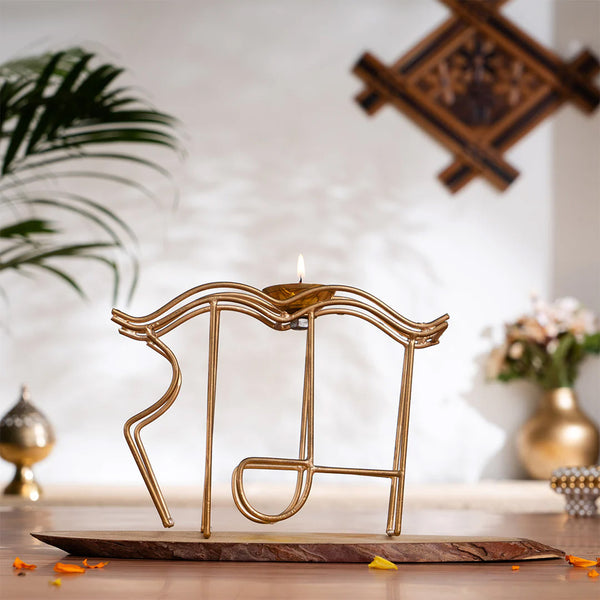
Brass Ram Symbol Diya (5 Inch)
Conclusion
Thus, this is the story of how Ram died. One of the greatest warriors in Hindu mythology, Lord Rama death is not chronicled in the great epic tale of Ramayana.
Though popularly believed to have vanished on the banks of the Sarayu River, Lord Rama continues to hold his forte as one of the most loved and respected figures in Indian culture.


